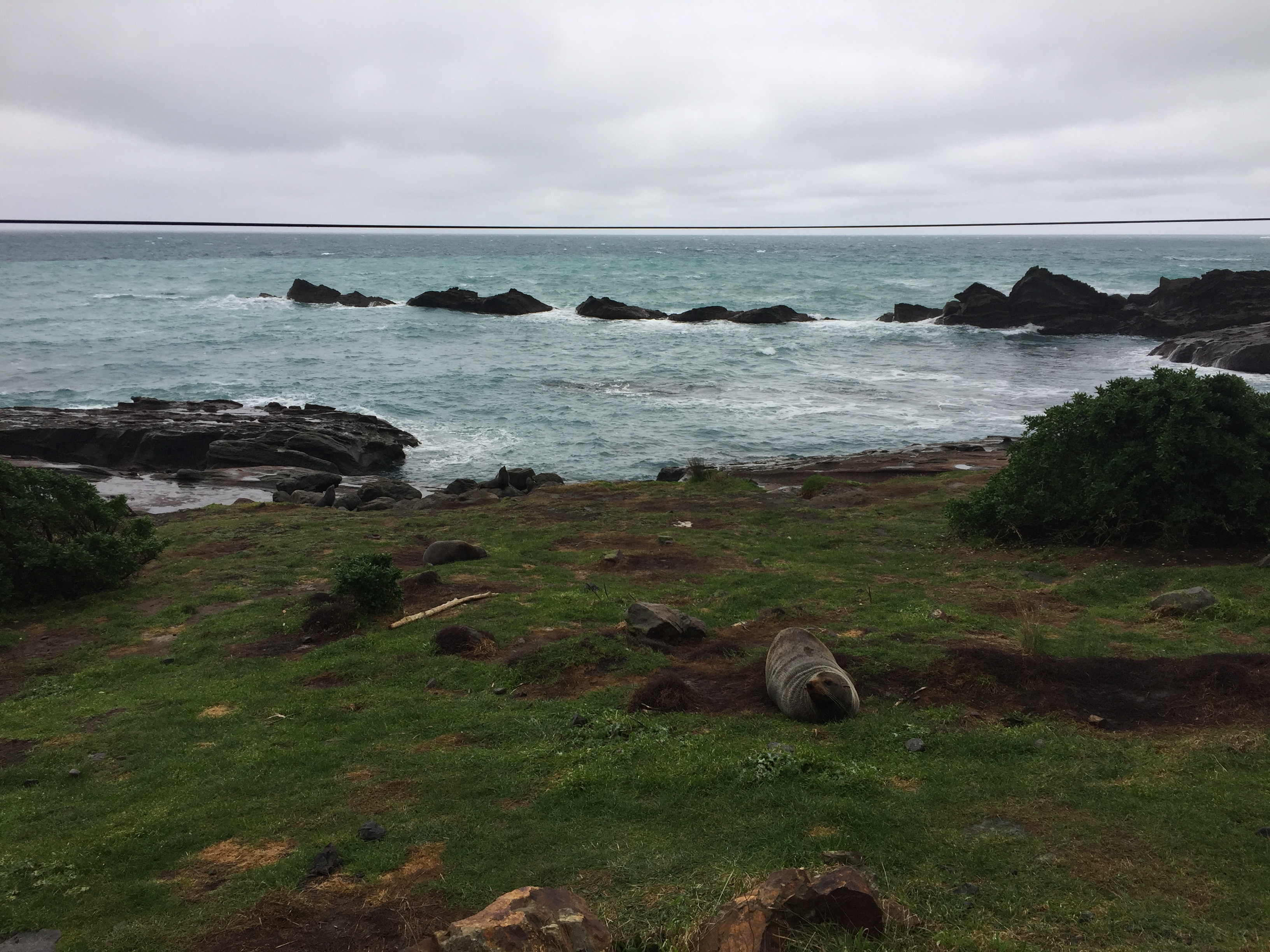Cape Palliser on:
[Wikipedia]
[Google]
[Amazon]
Cape Palliser is a promontory on the southern coast of New Zealand's
 Cape Palliser is home to a permanent fur seal colony. The rookery was found there in 1991, the first one found in the North Island in the 20th century, indicating that the seals are recovering from previous exploitation.
Cape Palliser is also a breeding site for
Cape Palliser is home to a permanent fur seal colony. The rookery was found there in 1991, the first one found in the North Island in the 20th century, indicating that the seals are recovering from previous exploitation.
Cape Palliser is also a breeding site for
North Island
The North Island ( , 'the fish of Māui', historically New Ulster) is one of the two main islands of New Zealand, islands of New Zealand, separated from the larger but less populous South Island by Cook Strait. With an area of , it is the List ...
and is the southernmost point of the North Island; it is in fact considerably farther south than Nelson
Nelson may refer to:
Arts and entertainment
* ''Nelson'' (1918 film), a historical film directed by Maurice Elvey
* ''Nelson'' (1926 film), a historical film directed by Walter Summers
* ''Nelson'' (opera), an opera by Lennox Berkeley to a lib ...
or Blenheim in the South Island
The South Island ( , 'the waters of Pounamu, Greenstone') is the largest of the three major islands of New Zealand by surface area, the others being the smaller but more populous North Island and Stewart Island. It is bordered to the north by ...
.
It is located at the eastern end of Palliser Bay in the Wairarapa
The Wairarapa (; ), a geographical region of New Zealand, lies in the south-eastern corner of the North Island, east of metropolitan Wellington and south-west of the Hawke's Bay Region. It is lightly populated, having several rural service t ...
region, 50 kilometres southeast of Wellington
Wellington is the capital city of New Zealand. It is located at the south-western tip of the North Island, between Cook Strait and the Remutaka Range. Wellington is the third-largest city in New Zealand (second largest in the North Island ...
– 100 kilometres by road.
A small settlement, Ngawi, is situated near Cape Palliser, where the main income comes from crayfish
Crayfish are freshwater crustaceans belonging to the infraorder Astacidea, which also contains lobsters. Taxonomically, they are members of the superfamilies Astacoidea and Parastacoidea. They breathe through feather-like gills. Some spe ...
(southern rock lobster) fishing. Fishing boats are pushed into the sea on their trailers by bulldozers.
Ngā Rā-a-Kupe, previously known as Kupe's Sail, is a nearby triangular upthrust of sedimentary rock shaped like a sail. Māori history and the Kupe legend both feature Cape Palliser. Cape Palliser was named in 1770 by Captain James Cook
Captain (Royal Navy), Captain James Cook (7 November 1728 – 14 February 1779) was a British Royal Navy officer, explorer, and cartographer famous for his three voyages of exploration to the Pacific and Southern Oceans, conducted between 176 ...
in honour of his friend Admiral Sir Hugh Palliser
Admiral Sir Hugh Palliser, 1st Baronet (26 February 1723 – 19 March 1796) was a Royal Navy officer and politician. As captain of the 58-gun HMS ''Eagle'' he engaged and defeated the French 50-gun ''Duc d'Aquitain'' off Ushant in May 1757 du ...
of the British Royal Navy
The Royal Navy (RN) is the naval warfare force of the United Kingdom. It is a component of His Majesty's Naval Service, and its officers hold their commissions from the King of the United Kingdom, King. Although warships were used by Kingdom ...
. On 7 March 2023, the name of the cape was officially gazetted as Cape Palliser / Mātakitaki-a-Kupe, following the enactment of the Ngāti Kahungunu ki Wairarapa Tāmaki nui-a-Rua Claims Settlement Act 2022. The Māori-language portion of the name refers to Kupe gazing out to sea from the location.
The Cape Palliser Lighthouse
Cape Palliser Lighthouse is a lighthouse at Cape Palliser in the Wellington region of the North Island of New Zealand. It is owned and operated by Maritime New Zealand.
The light was built in 1897 and was originally fueled by oil. In 1954 t ...
is located here; it was first lit in 1897 but became automated in 1986. It flashes twice every 20 seconds.
Biodiversity
 Cape Palliser is home to a permanent fur seal colony. The rookery was found there in 1991, the first one found in the North Island in the 20th century, indicating that the seals are recovering from previous exploitation.
Cape Palliser is also a breeding site for
Cape Palliser is home to a permanent fur seal colony. The rookery was found there in 1991, the first one found in the North Island in the 20th century, indicating that the seals are recovering from previous exploitation.
Cape Palliser is also a breeding site for red-billed gull
The red-billed gull (''Chroicocephalus novaehollandiae scopulinus''), also known as tarāpunga and as the mackerel gull, is a native gull, seagull of New Zealand, being found throughout the country and on outlying islands including the Chatham I ...
s. This species has the conservation status of "Nationally at risk" and is "Regionally Vulnerable" in the Wellington region.
References
Palliser Cook Strait {{Wellington-geo-stub